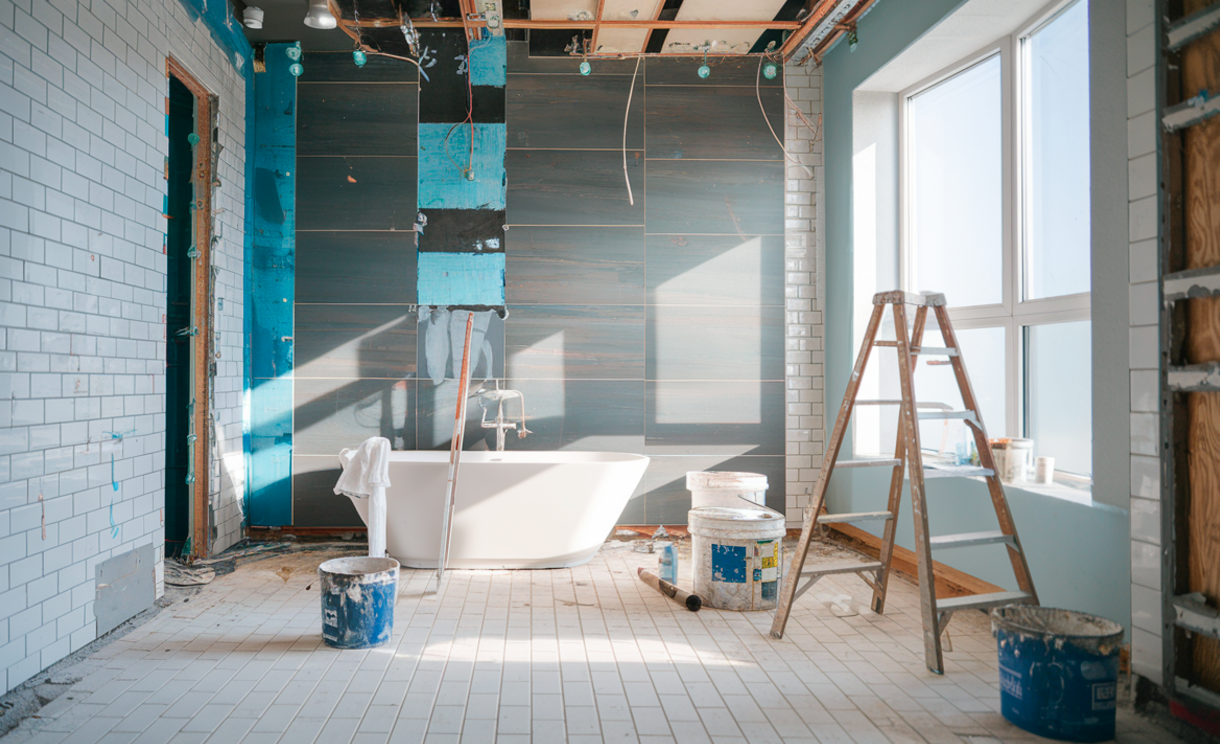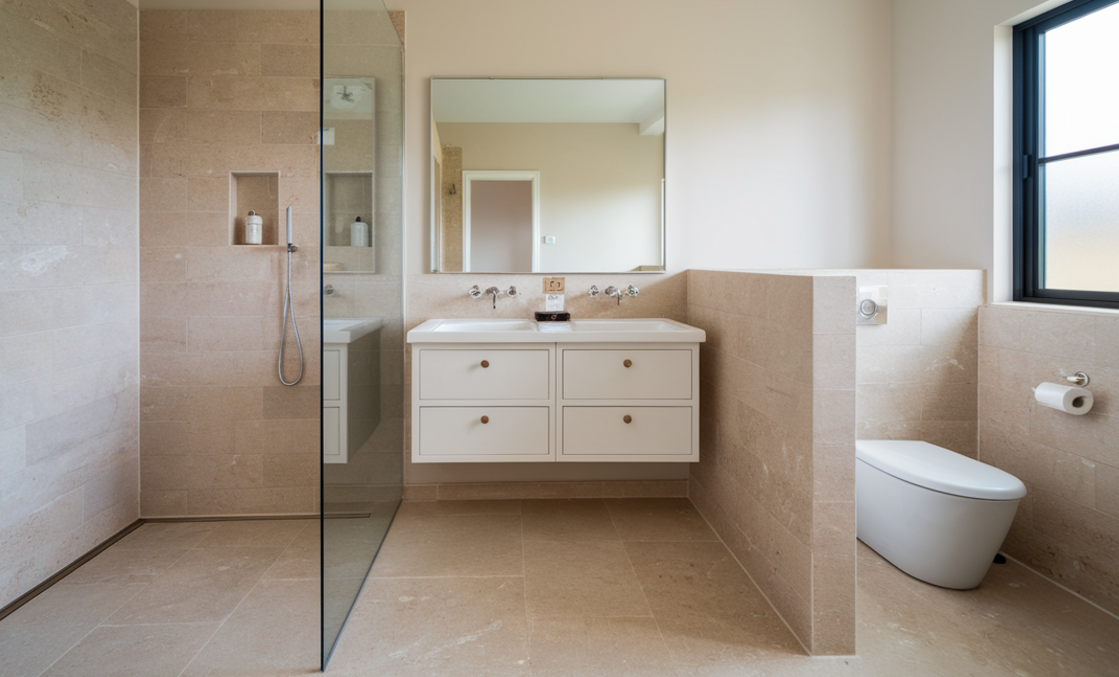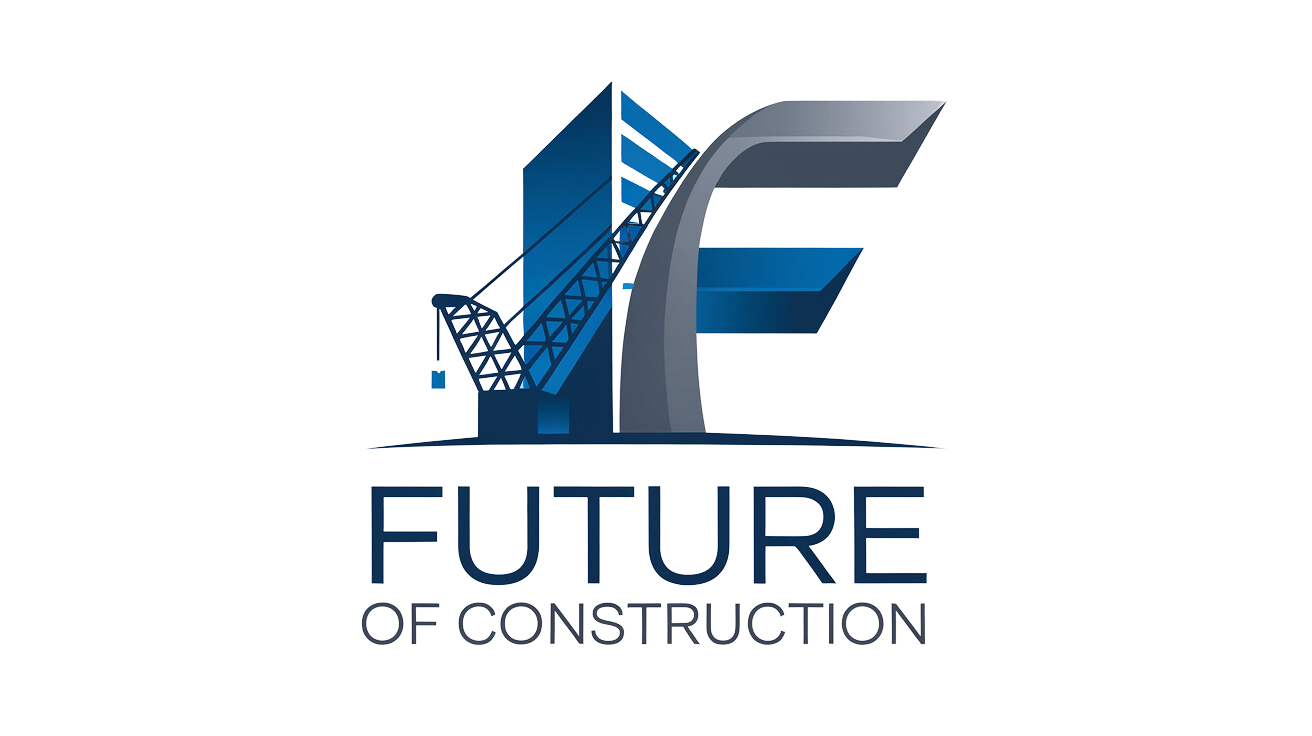A bathroom renovation typically takes 4–8 weeks, depending on the size and scope of the project, with phases including planning, demolition, rough-in work, structural updates, fixture installation, and final touches. Factors like bathroom size, the complexity of the renovation, material availability, and contractor scheduling significantly impact the timeline.
Hidden issues, such as plumbing or structural problems, and delays in permits or materials can extend the duration, but hiring experienced professionals and preparing a buffer can help minimize disruptions. Proper planning, clear communication, and temporary arrangements for bathroom use ensure a smoother renovation process.
A bathroom renovation is one of the most common home improvement projects, offering both functional and aesthetic upgrades to one of the most important spaces in your home. However, understanding the timeline for such a project is essential for proper planning. From preparing for temporary inconveniences to coordinating with contractors and suppliers, knowing how long the process will take can save you time, stress, and money. This article will guide you through the factors that influence a bathroom renovation’s duration, outline a typical timeline, and provide tips to keep the project on track.
Factors That Influence the Timeline
The time it takes to renovate a bathroom can vary greatly depending on several factors. The size of your bathroom is one of the most significant elements. A small powder room, for instance, will take much less time to renovate compared to a master bathroom with a bathtub, dual sinks, and custom fixtures.
The scope of the renovation is another critical factor. A simple cosmetic update, such as replacing faucets and painting, will be far quicker than a full remodel that involves plumbing, electrical work, or changing the layout. Custom features, such as unique tiles, specialty fixtures, or high-end cabinetry, can also extend the timeline, particularly if these items have long lead times.
Permits and inspections may also affect the duration of your renovation. In some areas, you’ll need approval before making structural changes, and scheduled inspections during key stages of the project can add days or even weeks. Lastly, contractor availability plays a major role. Experienced professionals can complete projects efficiently, but if you’re relying on limited availability or attempting a DIY approach, the timeline may stretch out significantly.

Typical Timeline for a Bathroom Renovation
While timelines vary, a general outline of the bathroom renovation process includes several distinct phases:
Planning Phase (1–3 weeks)
The planning phase involves designing the layout, choosing materials, and creating a budget. During this time, you’ll work with contractors or designers to finalize your vision and ensure all necessary materials are ordered.
Demolition Phase (1–3 days)
Once the project begins, the first step is to remove existing fixtures, tiles, and sometimes even walls. This phase is relatively quick, but it can reveal unexpected issues, such as hidden mold or plumbing problems, which may require additional work.
Rough-In Phase (1–2 weeks)
The rough-in phase involves the foundational work for plumbing and electrical systems. If you’re moving fixtures like the sink or toilet, this stage could take longer. Inspections are often required during this phase, and their timing depends on local regulations.
Structural and Cosmetic Work (1–3 weeks)
With the rough-in completed, the focus shifts to installing drywall, tiles, and other surfaces. This phase also includes painting and adding cabinetry. The duration can vary based on the complexity of the design and the materials used.
Fixture Installation (1–2 weeks)
During this phase, contractors will install the bathtub, sink, toilet, lighting, and other fixtures. Custom or specialty items can take longer to fit properly.
Final Touches (1 week)
The final week is dedicated to cleaning, performing inspections, and addressing minor issues such as paint touch-ups or tile alignment. Once this is complete, your bathroom is ready for use.
In total, a bathroom renovation usually takes anywhere from four to eight weeks, depending on the size and scope of the project.
Tips to Minimize Delays
To keep your renovation on schedule, consider hiring experienced professionals who understand how to manage timelines effectively. Skilled contractors and project managers can anticipate and resolve issues before they escalate. Ordering materials early is another critical step to avoid delays caused by supply chain disruptions. Clear communication with everyone involved is essential to ensure timelines and expectations are understood.
It’s also important to prepare for the unexpected. Hidden problems such as plumbing leaks, structural damage, or outdated wiring can add time to the project. Building a buffer into your schedule can help you stay on track without unnecessary stress.

Common Challenges and Delays
Bathroom renovations are often subject to challenges that can extend the timeline. Hidden issues, such as mold behind the walls or outdated plumbing, are common surprises during demolition. Material availability is another frequent issue, particularly if you’ve chosen custom or imported items.
Changes to the renovation plan mid-project can also create delays, as contractors may need to adjust their approach or source additional materials. Scheduling conflicts, whether with contractors or inspectors, can further disrupt the timeline. Being prepared for these potential setbacks can help you navigate the process more smoothly.
How to Plan Your Schedule Around the Renovation
A bathroom renovation can significantly disrupt your routine, especially if it’s your only bathroom. Planning ahead is crucial. Consider setting up a temporary bathroom arrangement, such as using a second bathroom or coordinating with neighbors or friends. If you live with family or housemates, communicate clearly about the expected timeline and how it will affect daily routines.
If you work from home, be mindful of the noise and activity during the renovation. Adjusting your work schedule or finding an alternative workspace can help you stay productive during the project.

Conclusion
A bathroom renovation can be a rewarding project that enhances your home’s functionality and value, but it requires careful planning and patience. The timeline depends on factors such as the size of the bathroom, the scope of the renovation, and the availability of materials and contractors. By understanding the typical stages of the renovation process and preparing for potential challenges, you can ensure a smoother and more efficient experience. Proper planning, clear communication, and a flexible mindset are the keys to success when embarking on this exciting home improvement journey.
